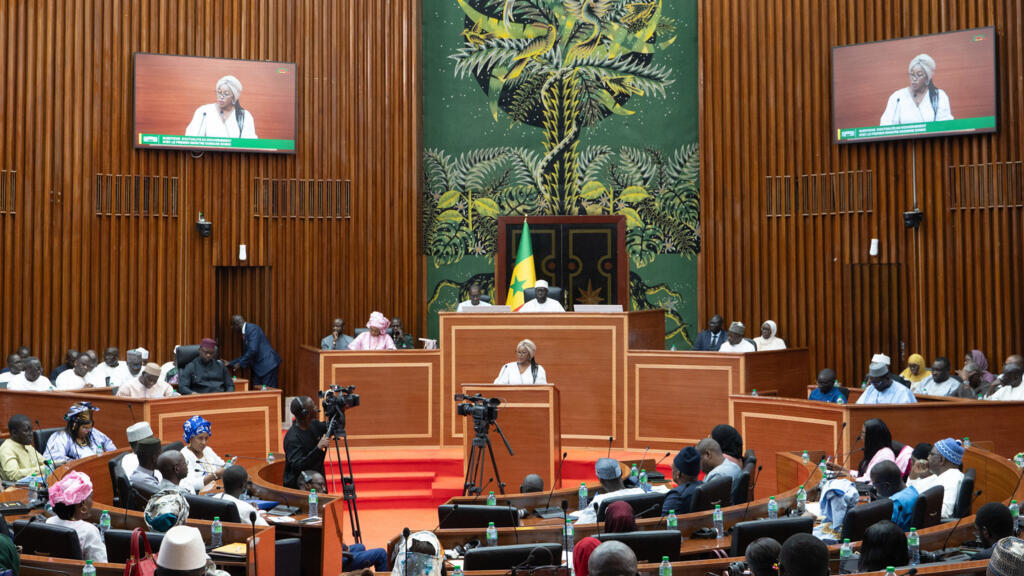Dakar shifts funding mix toward local-currency markets
Senegal raises CFAF 450 billion under a new financing doctrine, shifting debt toward local markets and tighter audit rules. Watch BZ=F near USD 80 and EMB +15 bps YTD as WAEMU yields 6.3–6.5% test compression through mid-2026.

Senegal has launched a new financing doctrine for public policy alongside a CFAF 450 billion domestic issuance through Agence UMOA-Titres (AUT), signaling a structural realignment toward local-currency borrowing and rule-based fiscal management. The initiative comes as total public debt approaches 73% of GDP in 2025, with an overall deficit near 4.1% of GDP and nominal GDP around USD 30 billion.
Growth is projected at 6.4% in 2025 after 8.0% in 2024, while inflation moderates near 3% as food and fuel costs stabilize. The doctrine aims to embed fiscal discipline within the funding process by linking borrowing decisions to measurable project performance and transparent disclosure under WAEMU’s monetary framework.
The framework rests on three operational reforms. First, it prioritizes medium- and long-term CFAF issuance on UMOA-Titres to build a deeper local yield curve and mitigate FX mismatch on sovereign liabilities. Second, it ties borrowing ceilings to project-level audits, enforcing cost-benefit justification before disbursement. Third, it mandates standardized fiscal reporting—covering budget outturns, contingent liabilities, and execution timelines—to strengthen price discovery and reduce investor uncertainty.
The CFAF 450 billion operation confirms market confidence, with nominal weighted yields around 6.2–6.5% and bid coverage exceeding 1.2×, aligning with WAEMU’s short-end sovereign yields of 6–7%. In contrast, Senegal’s 2033 Eurobond trades near 9–10%, highlighting the cost differential that favors domestic funding as global rates remain high.
The macro transmission mechanism runs through reduced FX exposure, lower interest costs, and extended duration. By shifting toward domestic issuance, Senegal limits its sensitivity to U.S. rate cycles and stabilizes debt service in local currency. A 30–50 basis-point decline in local yields through improved transparency and predictable calendars could save CFAF 1.2–3.5 billion annually on each CFAF 400–700 billion rolled over—a modest figure but meaningful as interest payments edge toward 15% of revenue.
Longer maturities smooth redemption spikes and improve liquidity forecasting. For banks, an expanded sovereign-paper supply widens collateral eligible for BCEAO refinancing, compressing repo spreads and enhancing monetary transmission. Over time, steadier issuance schedules reduce crowding-out effects and support private-sector credit expansion.
Regionally, Senegal’s doctrine formalizes what other WAEMU issuers attempted episodically: integrating fiscal accountability into debt strategy. While Ghana and Kenya pivoted toward domestic borrowing during external funding stress, weak audit enforcement undermined market confidence. Senegal’s rule-driven model—anchored by borrowing caps and performance audits—could serve as a regional benchmark if consistently applied.
Within the union, local-currency benchmarks cluster between 6 and 7%, providing room for spread compression if Dakar sustains credible disclosure and steady issuance. Stronger governance can attract cross-border institutional investors, deepening liquidity and stabilizing WAEMU sovereign auctions.
Investor reaction has been cautiously constructive. Higher issuance may initially lift yields as banks absorb supply, but improved transparency and discipline should narrow spreads by 20–40 basis points over the next two to three quarters. The eurobond curve remains driven by external factors: Brent front-month (BZ=F) around USD 80 per barrel supports the region’s terms of trade, while frontier-risk benchmarks such as EMB track U.S. rates and commodity sentiment. A stable local curve, combined with credible fiscal execution, could lower Senegal’s risk premium on both CFAF and hard-currency instruments by mid-2026.
Execution remains the core risk. Delays in audits or incomplete data disclosure would erode credibility and reverse yield gains. Regional liquidity depends on BCEAO policy and synchronized issuance across WAEMU members; concurrent fiscal expansions could tighten funding conditions. External shocks—such as an oil-price downturn or higher global yields—would still pressure spreads regardless of domestic reform.
The signal is institutional consolidation. Senegal is embedding fiscal discipline into market operations, aiming to reduce FX risk and enhance investor confidence. By Q2 2026, success will be measurable through four metrics: a domestic-to-external debt ratio above 50%, an average maturity on new CFAF issuance beyond five years, auction coverage consistently over 110%, and yields anchored between 6.0–6.5% with inflation steady near 3%.
If BZ=F stabilizes within USD 75–85 and EMB remains broadly unchanged while these indicators hold, Senegal will have realigned its debt structure toward lower rollover risk and greater policy credibility within WAEMU’s evolving capital-market framework.





